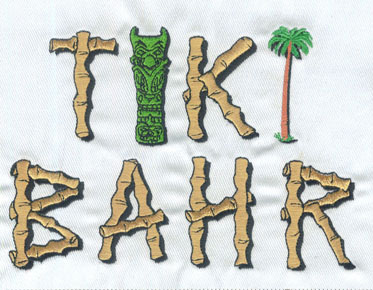How to Choose the Right Embroidery Thread and Needles
Selecting the appropriate embroidery thread and needles is crucial for ensuring the quality
and success of your embroidery projects. This article provides practical
considerations when choosing thread and needles, taking into account various
factors such as thread type, thickness, needle type and size, fabric type, and
color selection.
I. Embroidery Thread Selection:
1. Thread Types: Consider the desired effect
and purpose of the embroidery when choosing the thread type. Common embroidery
threads include polyester, nylon, metallic, and rayon. Each type offers unique
visual effects and textures.
2. Thread Thickness: Select the appropriate thread thickness based on design requirements and fabric type. Fine threads work well for intricate designs, while thicker threads can create bolder effects. Consider thread thickness in relation to the compatibility with the fabric.
II. Needle Selection:
1. Needle Types: Choose needle types that are
suitable for your embroidery project. Common needle types include embroidery needles and ballpoint
needles. Embroidery needles have sharp points for piercing the fabric, while
ballpoint needles are ideal for knitted or stretchy fabrics.
2. Needle Sizes: Select the right needle size
based on fabric characteristics and embroidery design requirements. Consider the weight and weave of the fabric. Thicker
fabrics may require larger needles, while delicate fabrics may require smaller
needles to avoid damage.
III. Fabric Considerations:
1. Fabric Type: Different fabric types have
different requirements for thread and needle selection. Soft and delicate
fabrics may require finer threads and smaller needles, while thicker and more
durable fabrics can accommodate thicker threads and larger needles. Discuss
your fabric choice with professional digitizing services to ensure compatibility with the chosen thread and
needle. Their knowledge of fabric properties and embroidery techniques will
help determine the best approach for your project.
2. Fabric Texture: Consider the texture of the fabric when choosing the thread and needle. Smooth fabrics may work well with shiny or metallic threads, while textured fabrics may benefit from threads with matte or textured finishes.
IV. Color Selection:
1. Color Compatibility: Choose thread colors
that complement the fabric and enhance the design. Consider the color scheme
and intended visual effects of the embroidery. Experiment with different color
combinations to achieve the desired aesthetic impact.
2. Contrast and Visibility: Select thread
colors that create sufficient contrast with the fabric to ensure the embroidery
design is clearly visible. Consider the background color of the fabric and any
additional design elements that need to stand out. Collaborate with embroidery digitization services, their
expertise in color theory and embroidery techniques will help create designs
with excellent visibility and clarity.
FAQs:
1. Can I use the same needle for different
fabric types?
While some needles can be used for multiple
fabric types, it is generally recommended to choose the appropriate needle
based on the fabric characteristics. Using the right needle helps prevent
fabric damage and ensures smooth stitching.
2. Can I mix different thread types in one
embroidery design?
Yes, you can mix different thread types in an embroidery design to create unique visual effects. However, consider the compatibility of the threads and their thicknesses to avoid tension issues during stitching.
3. How do I prevent thread breakage during
embroidery?
Thread breakage can occur due to various
factors such as incorrect tension, dull needles, or using the wrong needle for
the fabric. Ensure proper thread tension, use sharp needles, and choose the
appropriate needle size and type for the fabric to minimize thread breakage.
Conclusion:
Choosing the right embroidery thread and
needles is essential for achieving successful embroidery results. Consider the
thread type, thickness, needle type, and size in relation to the fabric
characteristics and design requirements. Collaborate with embroidery digitizing services to receive professional advice on
thread and needle selection, ensuring the best outcomes for your embroidery
projects.



